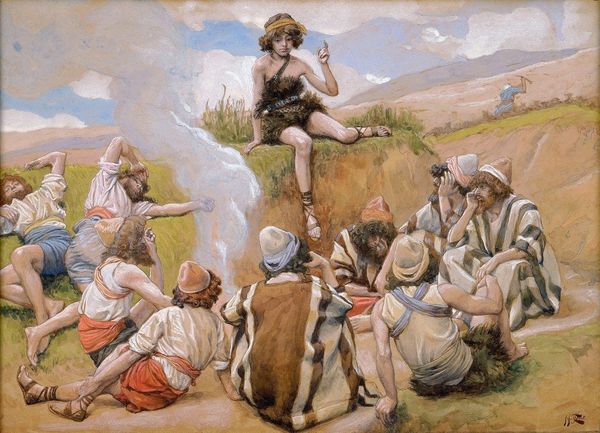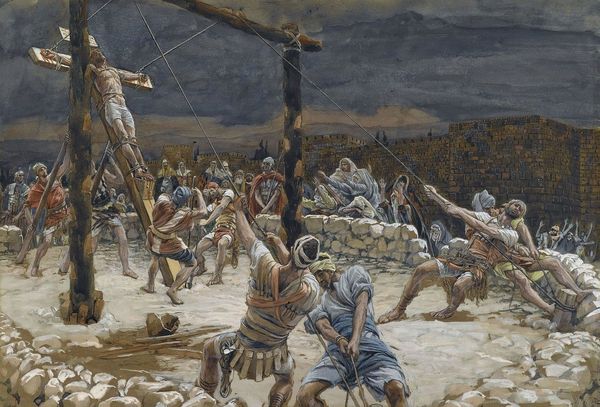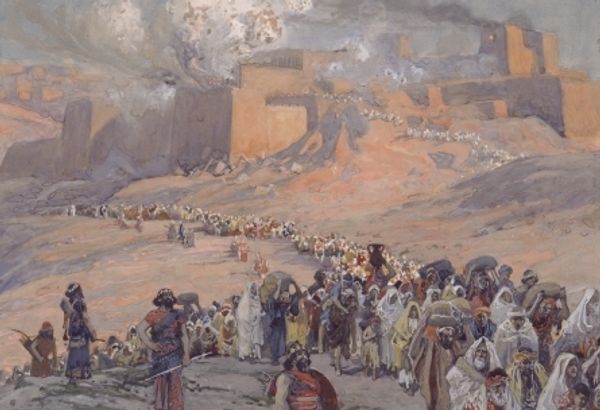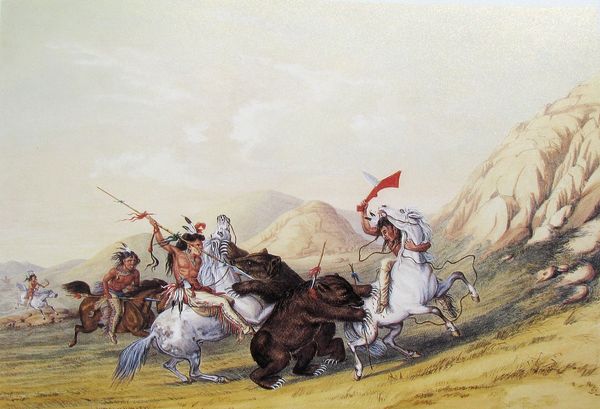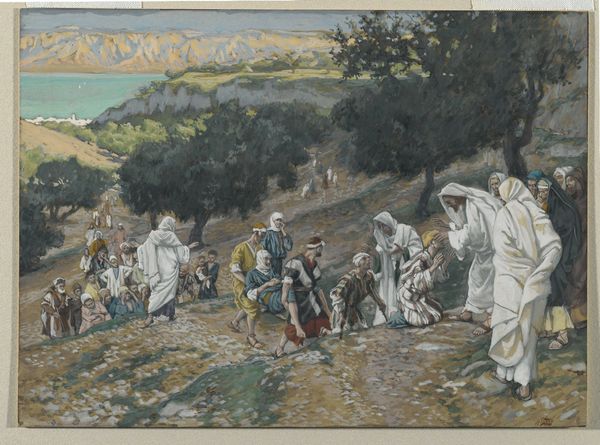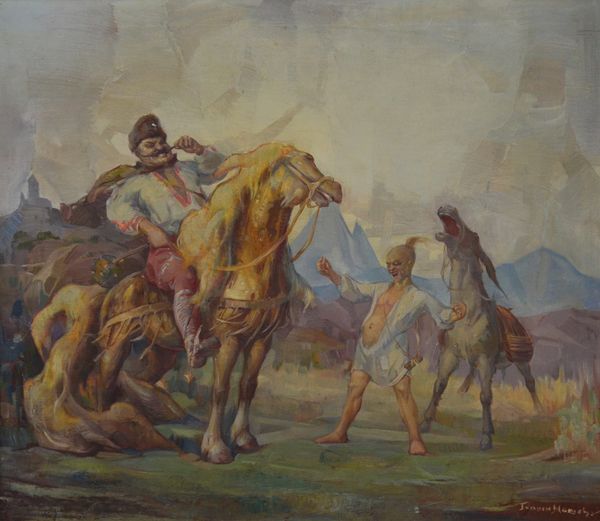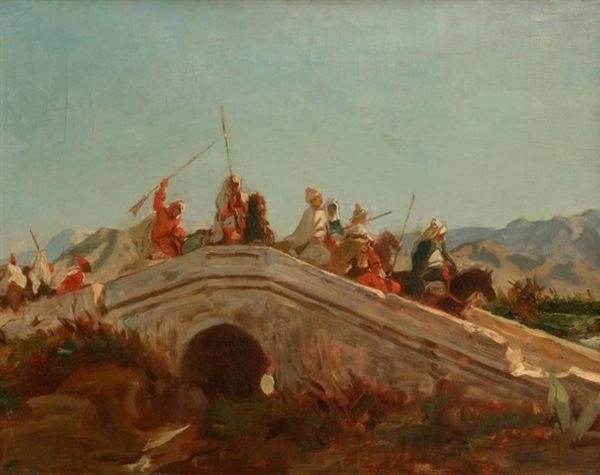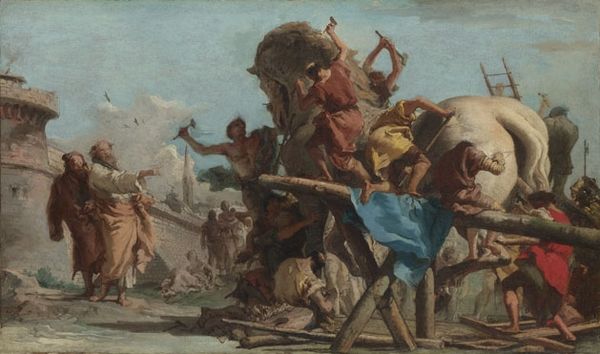
watercolor
#
narrative-art
#
watercolor
#
symbolism
#
watercolour illustration
#
history-painting
#
realism
Dimensions: 18.1 x 27.4 cm
Copyright: Public domain
Curator: This is "The Meeting of Esau and Jacob" by James Tissot, painted in 1902 using watercolors. Editor: The scene almost floats! A watercolor haze softens the landscape, and yet that central embrace has surprising emotional gravity. Curator: It does, doesn't it? Tissot really captures a complex mix of apprehension and relief. Think about the backstory: Jacob stole Esau’s birthright, fled, and now returns years later, laden with gifts, hoping for reconciliation. Editor: Yes, the symbol of the offered gifts is fascinating here, a cultural performance of peace-seeking. Look at the seated figures on the right, shrouded, almost ghostly. Are they skeptical, witnessing this historic moment? Curator: Exactly. Tissot, though working within a very realistic framework, used symbolism to add depth. Those figures could represent collective memory, the weight of the past that these brothers must overcome. It makes me wonder about forgiveness, actually… whether it truly erases or simply overlays past transgressions. Editor: Overlay, perhaps. Nothing is truly erased; these symbols are layered. The embrace is a powerful image, masking, momentarily at least, generations of discord. The men cling to each other—perhaps not entirely trusting, as if seeking refuge from some hidden ancient truth. The open landscape underscores this sense of exposure. Curator: And yet the physical contact! That very human embrace, irrespective of motive, signals something. Don't we all strive to bridge divides? Even if, as you cleverly mentioned, something lies dormant, hidden beneath the surface. Editor: This piece reminds us that resolution is never a clean break, always marked by the residue of history, a continuous process of remembering and reshaping. Curator: I feel like these observations enhance our engagement and reveal just how enduring the implications of this biblical painting remain.
Comments
No comments
Be the first to comment and join the conversation on the ultimate creative platform.

